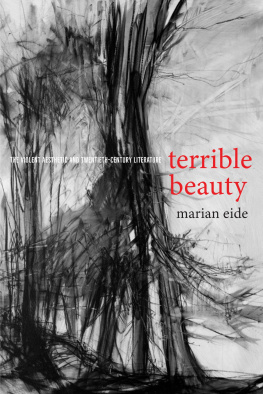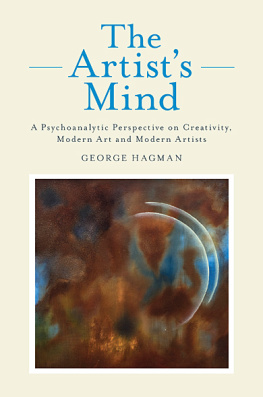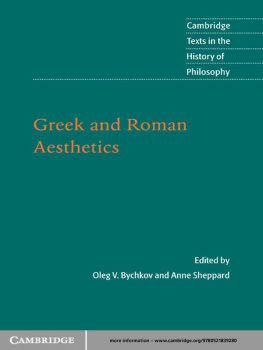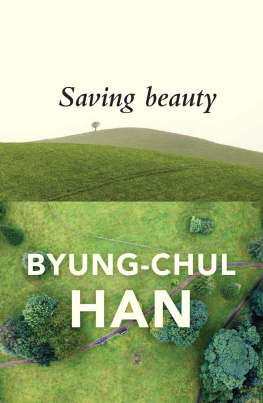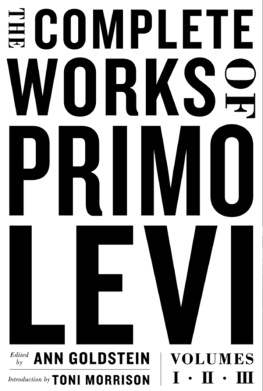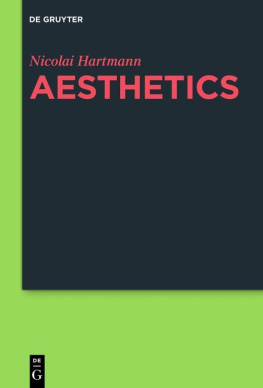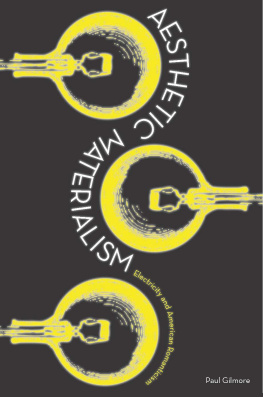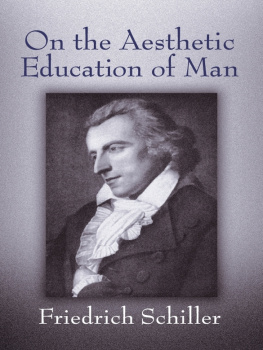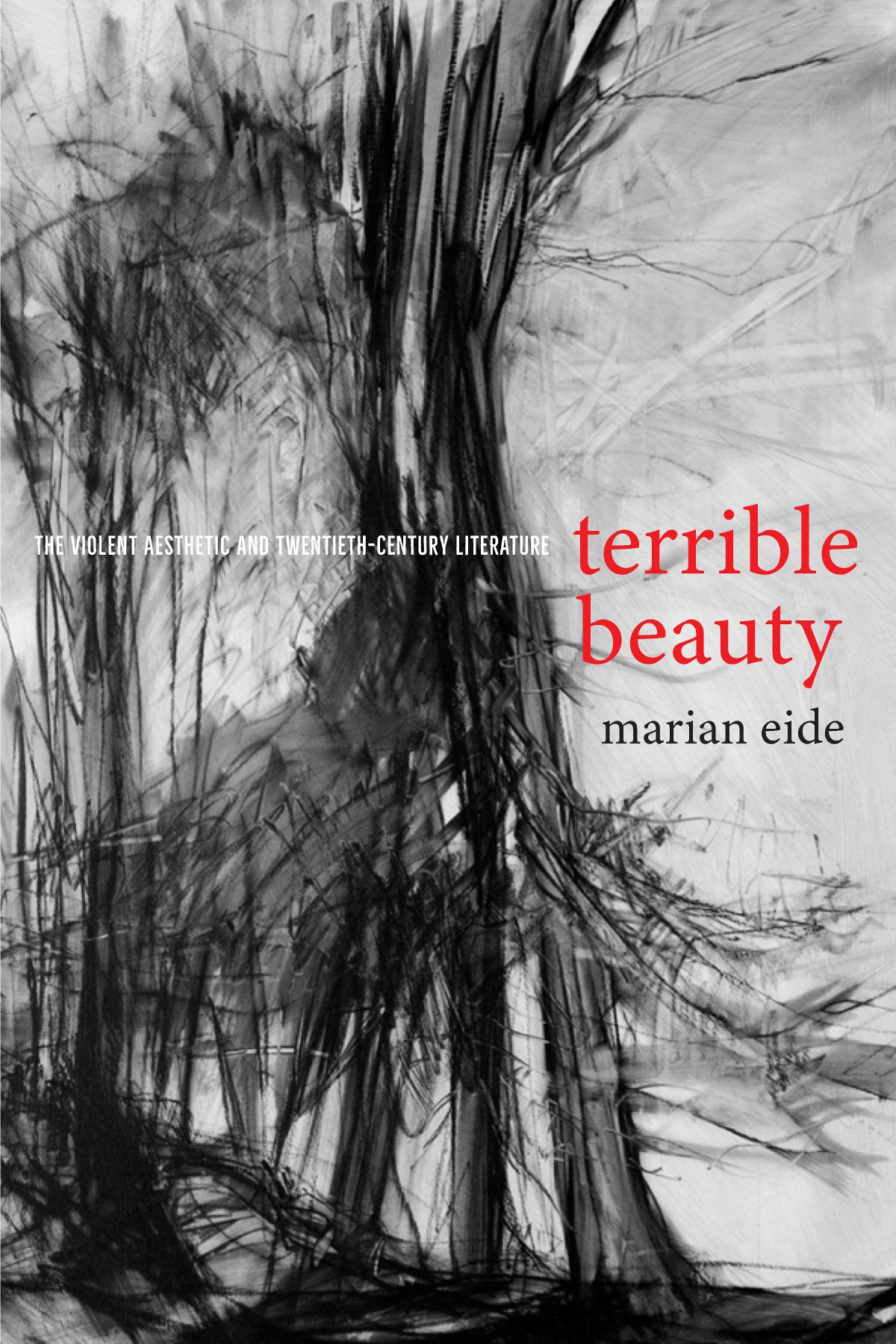
Cultural Frames, Framing Culture
Robert Newman, Editor
Justin Neuman, Associate Editor
Terrible Beauty
The Violent Aesthetic and Twentieth-Century Literature
Marian Eide
University of Virginia Press
Charlottesville and London
University of Virginia Press
2019 by the Rector and Visitors of the University of Virginia
All rights reserved
First published 2019
L IBRARY OF C ONGRESS C ATALOGING-IN- P UBLICATION D ATA
Names: Eide, Marian, author.
Title: Terrible beauty : the violent aesthetic and twentieth-century literature / Marian Eide.
Description: Charlottesville : University of Virginia Press, 2019. | Series: Cultural Frames, Framing Culture | Includes bibliographical references and index.
Identifiers: LCCN 2018046950 | ISBN 9780813942353 (cloth : alk. paper) | ISBN 9780813942377 (pbk. : alk. paper) | ISBN 9780813942360 (e-book)
Subjects: LCSH: Literature, Modern20th centuryHistory and criticism. | Violence in literature. | Literatureaesthetics.
Classification: LCC PN56.V53 E43 2018 | DDC 809/.04dc23
LC record available at https://lccn.loc.gov/2018046950
Cover art: Tree Study, Mary Moquin
For Lawrence James Oliver
Contents
Zainab Salbi was a child in Baghdad during the Iran-Iraq War. She remembers her embattled childhood in aesthetic terms: in vivid, explosive colors. How can we talk about war without talking about its colors? she writes. The colors of fire and blood, the color of earth as it explodes in our face? Responding to the Futurist Filippo Tommaso Marinetti, who praised wars aesthetic appeal, Benjamin called for the politicization of art.
For Salbi, however, an aestheticized memory of war produces not an alienated or dissociated relation to the human costs of violent conflict, but rather a lifelong activist commitment to alleviating these conditions, especially for women in war zones. When most Iraqi men were away fighting, Baghdadi women worked to create a sense of normalcy under constant threat and danger. Honoring those women, Salbi founded Women for Women International. Like other feminist humanitarians, she practices a situated philanthropy, conscious of her own assumptions going into a conflict zone and seeking to learn from the women in situ how best to improve she explains. During the 1,425 days of the siege of Sarajevo, for example, she worked with Fareeda, who kept her music school open and its instruments tuned, even when students needed to wear their overcoats and hats in her unheated classroom, even when snipers shot at her through the windows. That was her fight, Salbi recalls. That was her resistance. In the face of modern weaponry, she practiced the ancient art of music. Honestly, Salbi concludes, it was the women that I thought I was helping who taught me how to enjoy beauty and celebrate it.
During that long siege, Salbi was able to enter and exit the city, so she asked one Bosnian woman, OKwhat do you want me to bring you next time Im here? And the woman said lipstick. Im, like, Lipstick? What are you talking about? Dont you wantI dont knowvitamins? While Salbi focused on the practical and the necessary, concerns perhaps made possible by her freedom of movement, by her access to both lipstick and vitamins, this woman focused on what an outsider might accurately describe as cosmetic and inaccurately, as it turns out, as frivolous. Salbi remembers her reasoning: Because its the smallest thing we put on every day, and we feel we are beautiful, and thats how we are resisting. They want us to feel that we are dead. They want us to feel that we are ugly. Bosnian women preserved beauty as a defense in the face of violence, Salbi argues, and they explained their daily resistance in aesthetic terms: I put on the lipstick every time I leave because I want that sniper, before he shoots me, to know he is killing a beautiful woman.
I am struck by this arresting thought, a woman imagining her own body, dead in an alley. The snipers bullet has taken her life, and through the telescopic lens of his rifle, he can see her lips enhanced with color and see not only her natural beauty but also her embellishment, her anticipatory aestheticization of her corpse for a tableau with which she confronts her murderer. She wants him to know not only that he killed a living being, but, crucially, that he killed a beautiful woman. It is in her beauty, perhaps, that she rescues the specificity of a single life from the generic logic of a target, that she turns a statistic into an individual. It is in her beauty regimen that she imagines her killer will be forced to reflect, to confront the moral questions of war.
My argument in this book is not so different from that of this Sarajevan survivor. I argue that it is in the aesthetic response to violence that artists and their audiences join in a collective process of moral reflection. I admire the strength with which Fareeda cultivated beautiful music to battle the brutality of war; however, I aim here to explore the particular aesthetic of Salbis lipstick story. How are we to understand her artful description of an anticipated death in sniper alley, to interpret the tableau she paints in words: a beautiful woman, artfully appointed, gunned down in the back alley of a formerly cosmopolitan city? The women of Bosnia survived violence by making beauty, but Salbi herself engaged in another aesthetic, one in which she fascinates her audience with aesthetic violence that is not unlike the more traditional aesthetic practices: the beautiful and the sublime. It is an aesthetic through which she seeks to activate her storys audience.
This book is structured as a series of case studies in this aesthetic of political violence. I examine literary responses to war, insurrection, terrorism, ethnic cleansing, environmental degradation, genocide, and torture. Each of these forms of violence is the subject of a chapter. The texts I consider span literary genres to include poetry and novels, memoirs and drama. The aesthetic is produced from locations around the globe for readers across the globe.
I would like also to present here an alternative or supplement to existing trauma theory by noticing the drive to describe violence in itself, to dwell on brutality and even to delight in cruelty. I wish to propose that the violent aesthetic is poised between traumatic witness and another, darker will to destroy, mar, or harm. In literature that addresses calamity, the impulse is not only to testify to a victims tribulation but also to make something beautiful out of horror, to put lipstick on before becoming a corpse. I would like to convince you that this tendency is an aesthetic practice of its own, comparable to but also different from the beautiful or the sublime. Literatures of calamity aim to produce a difficult and volatile response to historys depredations, a response that (to borrow from Immanuel Kants theory of the beautiful) engages contemplation and reason in processes of judgment that model practices for negotiating ethical dilemmas.
The book is organized by genre into three parts: lyric poetry, postcolonial novels, and testimonial writing. To some extent, that organization is both arbitrary and inconsistently isomorphic: while the first section only addresses lyric poetry, the last grouping of testimonial writing includes memoirs and activist theater productions. So why this arrangement? The more obvious way to order the material might have been to proceed chronologically from the trenches of the Great War to the oil-fed terrors of the Abacha dictatorship in Nigeria. My alternative, generic organization resists the conclusions chronology might imply: that within these aesthetic practices one can track change over time, progress from cause to effect, or a genealogy of literary practice. That is not my argument. I find this aesthetic fairly static over the course of the century and mean to demonstrate that aesthetic stability by example as the cases unfold, moving forward chronologically in one section to retrace my steps to earlier times in the next. The case for generic grouping is a consciously fairly weak one, though I do assert that there are some conspicuous commonalities within forms: the lyric poem produces the poets sense that authenticity is formed by violence. The novels unfolding
Next page
